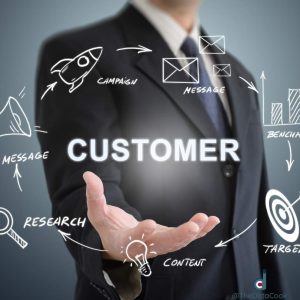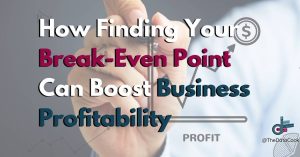
5 Ways to Leverage Your Data for More Sales
In the digital era, leveraging data for sales growth has become essential. Data holds invaluable insights into customer behavior and market trends. By harnessing this information, businesses can make informed decisions, optimize sales strategies, and drive revenue. One effective tactic is running targeted promotions for popular product/service combinations, giving them unique names. Additionally, analyzing sales trends helps identify upward trends in specific categories/services to allocate resources strategically.
Overview: In this guide, you’ll find everything you need to know to get started with leveraging your data for increased sales, including:
- What data leveraging is and why it’s important.
- The five different ways you can utilize your data to drive sales.
- Tips, tools, and best practices for successful data utilization.
Read on to discover these strategies and unlock the potential of your data to boost your sales and drive business success!
What are 5 Ways to Leverage Your Data for More Sales?
Discover five actionable ways to leverage your data for more sales. Segment customers, use predictive analytics, optimize pricing, and enhance cross-selling/upselling. Learn how to refine your sales funnel for maximum revenue growth.

1. Segment and Personalize Your Marketing Efforts
- Segment customers based on demographics, purchase history, and browsing patterns for targeted marketing.
- Personalize messages and offers to increase relevance and effectiveness.
- Promote popular product/service combinations through data-driven insights and unique bundle names.
Example: Increase sales by creating the “Ultimate Mobile Protection Bundle” for customers who frequently purchase smartphones and protective cases.
2. Harness Predictive Analytics for Sales Forecasting:
- Use predictive analytics to anticipate future trends and make accurate sales forecasts.
- Analyze historical sales data, market trends, and external factors for informed decision-making.
- Optimize inventory levels, pricing strategies, and resource allocation based on data-driven predictions.
Example: Capitalize on the growing demand for smart home devices by allocating resources to promote and meet this upward trend.
3. Optimize Pricing Strategies
- Analyze customer sensitivity to price changes, competitor pricing, and market demand.
- Find the optimal pricing levels that balance profitability and competitiveness.
- Regularly monitor market dynamics and adjust pricing strategies accordingly.

Example: Attract price-sensitive customers while maintaining profitability by leveraging data to identify price thresholds for different segments.
4. Enhance Cross-Selling and Upselling Opportunities:
- Analyze customer purchase histories to identify cross-selling and upselling opportunities.
- Create personalized product bundles, recommendations, and promotional offers.
- Increase average order value by suggesting complementary products/services.
Example: Boost revenue by offering bundled promotions based on data-driven insights into frequently purchased combination

5. Continuously Improve the Sales Funnel
- Analyze data on customer interactions, lead conversion rates, and sales cycle duration.
- Identify and address bottlenecks in the sales funnel to optimize conversion rates.
- Refine sales strategies, enhance customer engagement, and drive more conversions using data insights.
Example: Increase conversion rates by implementing targeted improvements at stages with high drop-off rates.
Why Leveraging Your Data for More Sales is Important?
-
- Increased Revenue Potential: According to a study by McKinsey, companies that leverage data-driven insights for decision-making experience 5-6% higher productivity and 6-8% higher profitability.
-
- Enhanced Customer Understanding: Research by Salesforce shows that 52% of customers are likely to switch brands if a company doesn’t personalize its communications. Leveraging data allows you to understand customer preferences and deliver personalized experiences, driving customer loyalty and sales.
- Competitive Advantage: According to a survey by Forbes, 79% of executives believe that companies that do not embrace data-driven decision-making will lose their competitive position and may face extinction.
- Improved Efficiency and Cost Savings: A study by IBM found that companies that effectively utilize data for decision-making can achieve up to 30% cost reductions. By leveraging data, you can optimize processes, minimize waste, and improve resource allocation, leading to increased operational efficiency and reduced costs.
Now let's explore different types of data leveraging and how they work to drive sales growth.
Types of Data Leveraging

1. Customer Data
- According to a survey by Econsultancy, 74% of marketers say that targeted personalization increases customer engagement and conversion rates. Gather and analyze customer demographic information, purchase history, browsing behavior, and engagement metrics to personalize marketing efforts and deliver targeted promotions.

2. Sales Data
- Analyzing sales data helps identify trends and opportunities. According to a study by Deloitte, companies that use advanced sales analytics experience a 5-10% increase in sales. Analyze sales patterns, product performance, and customer lifetime value to identify opportunities for upselling, cross-selling, and optimizing pricing strategies.

3. Inventory Data
- According to a study by Aberdeen Group, companies that optimize inventory management can reduce inventory costs by 20%. Utilize inventory management systems and sales data to optimize stock levels, ensure product availability, and minimize stockouts and excess inventory.
4. Feedback Data
- A survey by BrightLocal found that 82% of consumers read online reviews before making a purchase decision. Collect and analyze customer feedback through surveys, reviews, and social media monitoring to understand customer satisfaction levels, improve product offerings, and enhance the overall customer experience.

How to Leverage Data Successfully for More Sales
To leverage your data effectively and drive sales growth, follow these steps:
- Define Your Goals: Clearly identify your sales objectives and the specific metrics you want to improve, such as conversion rates, average order value, or customer retention.
- Collect Relevant Data: Ensure you have robust data collection processes in place to capture customer data, sales data, market data, and any other relevant information needed to support your goals.
- Analyze and Interpret: Use data analysis tools or hire data analysts to extract meaningful insights from your collected data. Identify patterns, trends, and opportunities that can inform your sales strategies.
- Implement Data-Driven Strategies: Apply the insights gained from your data analysis to personalize marketing efforts, optimize pricing, improve inventory management, and enhance the overall customer experience.
- Monitor and Refine: Continuously track and measure the impact of your data-driven strategies. Regularly review and refine your approaches based on performance metrics, customer feedback, and evolving market trends
Data Leveraging Tips and Best Practices

- Regularly update and maintain data hygiene to ensure the accuracy and reliability of your data.
- Invest in data visualization tools to present insights in a clear and easily understandable format.
- Ensure compliance with data protection regulations and maintain customer privacy and trust.
- Regularly communicate data-driven insights and findings across relevant teams within your organization to drive alignment and foster a data-driven culture.
Data Leveraging Tools

- Customer Relationship Management (CRM) software for managing and analyzing customer data.
- Business Intelligence (BI) tools for data analysis and visualization.
- Inventory management systems to optimize stock levels and track product performance.
- Social listening tools for monitoring customer feedback and sentiment on social media.
Get Started with Leveraging Your Data Today
Leveraging your data for more sales is a powerful strategy that can significantly impact your business’s growth and success. By implementing the strategies outlined in this blog post and utilizing the right tools, you can tap into the full potential of your data and drive revenue growth. Start leveraging your data today and unlock new opportunities for sales optimization and business expansion.
Are you looking for a Data Strategy for your business?
Express Recipe to Recipe for Goal Setting Using Data:
Calculating profits can be tricky. The ‘traditional’ way takes the sale of the product and reduces by cost of items used to make a product.
Sale: $10 – Cost of items $6 = Profit $4
However, there are a lot of other items that are needed to make the sale happen.
Some of these do get added into calculations such as payment providers, and tax(es).
There are some additional expenses that can get overlooked in the calculation at a product or service level and turn up later in the profit and loss (sometimes unexpectedly).
By finding these expenses and breaking them down to a modest calculation you can get a better understanding of where your profits are going.
Some of these expenses could be labour – estimate the time invested into the product/service and allocate a cost.




